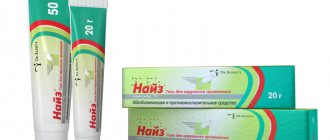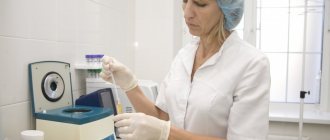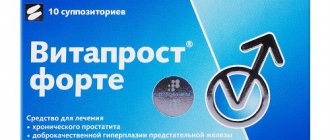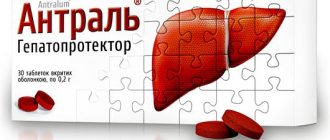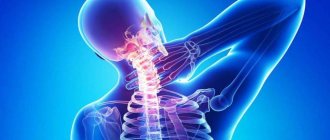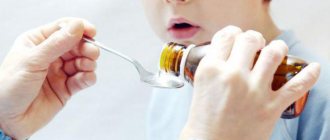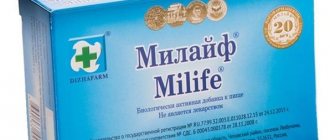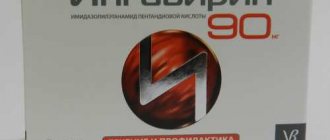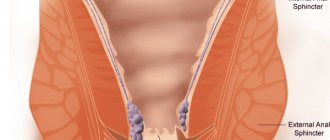Indications for use
Norfloxacin is prescribed for bacterial infections of the urinary system ( urethritis , cystitis , pyelonephritis ), genitals ( endometritis , cervicitis , prostatitis ), gastrointestinal tract (shigellosis, salmonellosis ), uncomplicated gonorrhea, and traveler's diarrhea . Used to prevent infectious diseases in patients suffering from granulocytopenia .
Locally, Norfloxacin is prescribed for conjunctivitis , keratitis , keratoconjunctivitis, corneal ulcer, blepharitis , blepharoconjunctivitis, meibomitis, dacryocystitis . The drug is used to prevent eye infections after extraction of a foreign body or conjunctiva from the cornea, before and after eye surgery, after damage by chemicals.
Norfloxacin is effective for external otitis, acute otitis media, chronic otitis media, and is prescribed for the prevention of infectious complications during surgical interventions on the organ of hearing.
Analogs
If individual intolerance to one of the components is detected or there is no clinical effect, the attending physician may replace the drug with its analogue based on the mechanism of action or the main active substance. Such drugs include:
- Nolicin is a structural analogue, produced on the basis of the same active component, with a similar mechanism of action. Intended for oral administration for the treatment of diseases of the genitourinary system of an infectious-bacterial nature.
- Norbactin is an antibacterial drug with a broad spectrum of action, a potent antipseudomonal agent.
- Sophasin is a drug from the pharmacological group of fluoroquinols with a similar active substance and mechanism of action.
Contraindications
Norfloxacin is not prescribed for intolerance to fluoroquinolones, pregnancy, breastfeeding, lack of glucose-6-phosphate dehydrogenase, childhood and adolescence (up to 18 years).
Use with caution for atherosclerosis of cerebral vessels, epileptic syndrome, renal failure, hepatic system, epilepsy .
Current opinions
You already know what information the instructions contain about the drug “Norfloxacin”. Analogs of this product are also described for you. But it is worth learning about the reviews that consumers of these medicines have. Statistics show that the most prescribed medicine from the list presented is Nolitsin. The drug “Normax” is considered expensive. The effect of using medications is the same. After all, they contain the same component in the appropriate quantity. So why pay more if you can choose a cheap analogue of Norfloxacin?
Experts have different opinions on this issue. Most doctors insist that you only use the drug that was prescribed. Indeed, it is worth following the doctor’s recommendations and not deviating from the prescribed regimen. But if you nevertheless replace the drug “Norfloxacin” with one of the drugs described above, then nothing bad will happen. It is important to read the instructions and follow their terms before use.
Side effects
Digestive system: nausea, bitterness in the mouth , diarrhea, loss of appetite, epigastric pain, increased activity of “liver” transaminases, vomiting, dyspeptic disorders; , pseudomembranous enterocolitis develops
Urinary system: glomerulonephritis , albuminuria, crystalluria, polyuria, dysuria, hypercreatininemia, urethral bleeding.
Nervous system: dizziness, headache, fainting, hallucinations , insomnia. Cardiovascular system: arrhythmia, vasculitis , drop in blood pressure, tachycardia.
Sense organs (for local use): photophobia, chemosis, conjunctival hyperemia, pain and burning in the eye, blurred vision.
Musculoskeletal system: tendon ruptures, tendinitis , arthralgia .
Hematopoietic organs: decreased hematocrit , decreased leukocyte count, eosinophilia.
Allergic reactions are possible: swelling, itching , Stevens-Johnson syndrome (exudative erythema of a malignant nature), urticaria . On other organs and systems – candidiasis .
Reviews
Numerous reviews about the drug prove its popularity. However, the experience of using an antibiotic for each patient is individual, since it depends on factors such as health status, course of the disease, and age. Therefore, the medication should be taken as prescribed and under the supervision of a doctor.
Doctors
Alexey Rakov, urologist, Velikiye Luki
Antibacterial therapy with Norfloxacin is an ambulance for uncomplicated urogenital infections. The drug is available to patients from all social classes. It is easy to dose. In long-term practice, there were no severe side effects requiring emergency response.
Valentina Kolesova, ophthalmologist, Ryazan
Norfloxacin drops are often prescribed to treat eye infections. Quickly cope with bacterial conjunctivitis. When applied topically, there are almost no side effects. They are inexpensive. Easy to find in pharmacies because they are produced in Russia.
Oleg Merkulov, otolaryngologist, Perm
Inflammatory diseases of the middle ear are quickly eliminated with Norfloxacin drops, if the disease is not yet very advanced. In severe cases, local remedies do not cope. Since this drug does not have a dosage form intended for infusion, it is necessary to choose other medications in difficult cases.
Instructions for use of Norfloxacin (Method and dosage)
Norfloxacin tablets, instructions for use
Orally: for cystitis without complications - 400 mg twice a day for 7 - 10 days; for infectious diseases of the urinary tract - within 3-7 days; for chronic recurrent urinary tract infections - up to 12 weeks.
For acute bacterial gastroenteritis – 5 days; for pharyngitis , cervicitis, proctitis, acute gonococcal urethritis - 800 mg once; for typhoid fever - 400 mg of the drug three times a day for 14 days.
As a prophylactic agent: against sepsis – 400 mg twice a day; against bacterial gastroenteritis – 400 mg once a day; against travelers' diarrhea - 400 mg of the drug the day before departure and throughout the trip (no more than 21 days); against relapses of infectious diseases of the urinary system - 200 mg of Norfloxacin per day.
In patients with impaired renal function with CC greater than 20 ml per minute, no dosage adjustment is required.
Patients on hemodialysis, as well as those with CC less than 20 ml per minute (or serum creatinine above 5 mg per 100 ml), are prescribed half the therapeutic dose twice a day or the full dose once a day.
Norfloxacin drops, instructions for use
Locally: 1 or 2 drops into the affected ear or eye 4 times a day. Depending on the level of infection, the first dose may be increased to 2 drops every two hours.
Release form and composition
Norfloxacin is produced in the form of film-coated tablets: yellow, biconvex, oblong with rounded ends, with a score line on one side; on the cross section - two layers, the inner layer is pale yellow or white (10 pieces each in blister packs made of polyvinyl chloride film and varnished printed aluminum foil, 1 or 2 packs in a cardboard box).
1 tablet contains:
- Active substance: norfloxacin – 200 or 400 mg;
- Auxiliary components (200/400 mg of active substance, respectively): aerosil (colloidal silicon dioxide) – 3.6/7.2 mg, magnesium stearate – 3.6/7.2 mg, microcrystalline cellulose – 120.4/240.8 mg, croscarmellose sodium – 10.8/21.6 mg, crospovidone – 21.6/43.2 mg;
- Shell (200/400 mg of active substance, respectively): hydroxypropyl methylcellulose (hypromellose) – 6.57/13.14 mg, polyethylene glycol 6000 (macrogol 6000) – 2.2/4.4 mg, titanium dioxide – 2.2/4, 4 mg, yellow quinoline dye - 0.03/0.06 mg.
Interaction
of theophylline by 25% . Increases the concentration of cyclosporine and indirect anticoagulants in the blood serum. Reduces the effect of nitrofurans .
The simultaneous use of antacids with magnesium and aluminum hydroxide , as well as drugs with sucralfate , negatively affects the absorption of Norfloxacin - there should be an interval of at least 4 hours between taking these drugs.
Simultaneous use of Norfloxacin with drugs that lower the epileptic threshold can provoke the development of epileptic seizures.
The simultaneous use of Norfloxacin and drugs that are potentially capable of lowering blood pressure can lead to a sharp decrease in blood pressure. Therefore, in such cases, as well as with the simultaneous use of barbiturate-containing and other drugs for general anesthesia, it is necessary to monitor the pulse, blood pressure level, and heart function.
Pharmacological properties
Pharmacodynamics
Norfloxacin is an antimicrobial drug belonging to the fluoroquinolone group. It has a bactericidal effect, realized by inhibiting DNA gyrase, which ensures the stability and supercoiling of bacterial DNA. This causes destabilization of the DNA chain and the death of bacteria.
Gram-negative aerobic microorganisms (Serratia marcescens, Citrobacter freundii, Pseudomonas aeruginosa, Enterobacter cloacae, Enterobacter aerogenes, Proteus vulgaris, Proteus mirabilis, Escherichia coli, Neisseria gonorrhoeae, Klebsiella pneumonia) and Gram-positive aerobic microorganisms (Str eptococcus agalactiae, Enterococcus faecalis, Staphylococcus saprophyticus, Staphylococcus epidermidis, Staphylococcus aureus).
In vitro, norfloxacin acts on such gram-negative aerobes as Pseudomonas stutzeri, Pseudomonas fluorescens, Citrobacter diversus, Providencia stuartii, Providencia rettgeri, Providencia alcalifaciens, Edwardsiella tarda, Morganella morganii, Enterobacter agglomerans, Klebsiella oxytoca, Haemophilus ducreyi, as well as Ureaplasm a urealyticum.
Norfloxacin does not show activity against obligate anaerobes.
Pharmacokinetics
When taken orally, absorption of norfloxacin occurs rapidly, and the extent of absorption is 30–40%. Taking with food reduces absorption. The maximum content of norfloxacin in blood plasma when taking 800, 400 and 200 mg is 2.4, 1.5 and 0.8 mcg/ml, respectively. The maximum concentration in blood plasma is recorded after 1 hour. The half-life averages 3-4 hours. The equilibrium concentration of norfloxacin in blood plasma is achieved within 2 days.
In elderly patients, the rate of elimination is slower (due to age-related decline in renal function). Therefore, after oral administration of 400 mg of norfloxacin, the area under the concentration-time pharmacokinetic curve is 6.97–12.63 mg/h/ml, and the maximum concentration varies from 1.25 to 2.79 μg/ml (in young patients these the indicators are 6.4 mg/h/ml and 1.5 μg/ml, respectively). The half-life in this category of patients is 4 hours.
Norfloxacin is bound to plasma proteins by 10–15%.
In chronic renal failure (creatinine clearance less than 30 ml/min/1.73 m2), the half-life increases to 6.5 hours.
Norfloxacin is involved in metabolic processes in the liver. Renal clearance is 275 ml/min. The substance is excreted through the kidneys within 24 hours: unchanged – 26–32%, in the form of a metabolite with weak pharmacological activity – 5–8%. Subsequently, less than 1% of the dose taken is excreted in the urine. About 30% of norfloxacin is excreted through the intestines. In elderly patients, approximately 22% of the dose taken is excreted by the kidneys (renal clearance is 154 ml/min).
2-3 hours after oral administration of 400 mg of Norfloxacin, its concentration in the urine exceeds 200 mcg/ml, and for 12 hours it is maintained at a level of 30 mcg/ml or higher. At pH 7.5, the solubility of the substance decreases.
special instructions
During treatment with Norfloxacin, direct exposure to sunlight should be avoided and it is recommended to take plenty of fluids. Particular care should be taken when driving vehicles, operating complex mechanisms, and performing work that requires high concentration and rapid psychomotor reactions (especially in the case of simultaneous intake of ethanol).
During therapy, an increase in the prothrombin index ; During surgery, it is necessary to constantly monitor the level of blood clotting.
The drug "Normax"
The next analogue of the drug “Norfloxacin” is the drug “Normax”. It is less popular than the means described above. Despite this, the medicine can completely replace its predecessor. The composition and release form of the drugs are the same. The contraindications remain the same.
The difference between medications is in cost, method of use and indications. As consumers say, the drug is often prescribed in the form of drops. They are used in ophthalmology and otorhinolaryngology. The product in tablets costs approximately 180 rubles for 6 capsules. The liquid form of the medication is produced in a volume of 5 milliliters and costs the consumer 200 rubles. The drug "Normax" is used for diseases of the urinary and genital tract, as well as for the treatment of otitis media of various localizations and conjunctivitis.
Norfloxacin price, where to buy
The price of Norfloxacin in 400 mg tablets is approximately 115-140 rubles per package No. 10.
5 ml eye drops cost 175 rubles.
- Online pharmacies in RussiaRussia
- Online pharmacies in UkraineUkraine
ZdravCity
- Norfloxacin tablets p.p.o.
400 mg 10 pcs. JSC Obolenskoe farm. enterprise 154 rub. order - Norfloxacin tablets p.p.o. 400 mg 20 pcs. JSC Obolenskoe farm. company
RUB 261 order
- Norfloxacin tab. p/o captivity. 400 mg No. 20Ozon LLC
RUB 349 order
- Norfloxacin tab. p/o captivity. 400 mg No. 10Ozon LLC
175 rub. order
Pharmacy Dialogue
- Norfloxacin tablets 400 mg No. 20 Obolenskoe pharmaceutical company.
RUB 295 order
- Norfloxacin (tab.p/vol. 400 mg No. 10) Obolenskoye pharmaceutical representative.
RUB 163 order
show more
Popular substitute
The product “Norfloxacin” also has more expensive analogues. These include the popular and frequently prescribed drug Nolitsin. It also contains 400 milligrams of norfloxacin. 10 tablets will cost approximately 200 rubles. A large pack containing 20 capsules will cost the buyer 400 rubles. Reviews about this medication are mostly good, but patients are indignant at such a high cost.
The indications and method of use for this drug are the same as its predecessor. But contraindications include only childhood, hypersensitivity and lactation. The product is used during pregnancy only for health reasons. The manufacturer does not have clinical data on this use.
